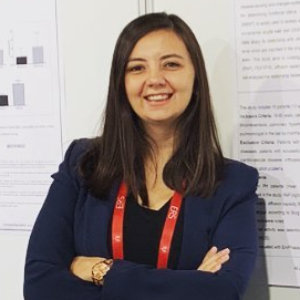Title : Pulmonary rehabilitation in older patients with asthma
Abstract:
Asthma could be identified as chronic inflammation of airways in addition to airflow limitation and airway hyperresponsiveness. Although it is known as a childhood disease, asthma incidence in the elderly has been increasing due to longer life expectancy. The prevalence of asthma is reported 1–18 percent in different countries, becoming a severe global health problem. Globally, it is predicted that more than 100 million people will get diagnosed with asthma until 2025 because of modern lifestyle and urbanization. In Turkey, the prevalence of asthma is reported at 3.8 percent in 2019. The prevalence of asthma in adults over 65 years old is reported between 4 percent and 13 percent, and the number of patients with asthma aged 65 years and older is also estimated to increase more considering expected higher the number of older people. Furthermore, older patients with asthma may have higher morbidity and mortality, a greater financial burden to health systems, and poorer quality of life than younger ones. The diagnosis of asthma depends on medical history, physical examination parameters, and objective pulmonary functions measurement. Cough, wheezing, chest tightness, variable expiratory airflow limitation, and dyspnea that worsen in the early morning hours or with exercise are typical asthma complaints. Increased breathing frequency and ventilation caused by exercise may lead to dyspnea in asthma in every stage, and older patients with asthma may feel more dyspnea than adult patients. Dyspnea on exertion and fear of triggering symptoms may lead to avoidance of physical activity in elderly patients with asthma, resulting in exercise intolerance, decondition, decrease in walking distance, social isolation, and depression. Aging may also contribute to decreased muscle strength, primarily type II muscle fibers in the lower extremities, which may further deteriorate the physical function and physical independence in elderly patients with asthma. Moreover, decreased functional exercise capacity and quadriceps muscle strength, and increased risk of falling were also reported in elderly patients with asthma compared to their healthy peers. Thus, restoring expected levels of physical activity, preserving muscle mass, preventing asthma symptoms, pulmonary functions, and avoiding adverse effects from asthma medication can be defined as the main goals of asthma management. Asthma patients with dyspnea, decreased exercise tolerance, a restriction in daily activities, and impaired general health status may be candidates for Pulmonary Rehabilitation (PR). PR could be defined as a comprehensive approach based on a detailed assessment followed by patient-based therapies that involve education, exercise training, and behavior change according to The American Thoracic Society (ATS) and the European Respiratory Society (ERS). A PR program for asthma patients may consist of patient education, exercise training, psychosocial/behavioral support, nutritional therapy, outcome assessment, and motivational approaches to adherence to the long-term rehabilitation recommendations. Participation in moderate physical activity programs can improve cardiovascular fitness, quality of life, and dyspnea management in asthma. Forms of exercises for these patients may include breathing retraining, cardiovascular endurance training and strength training. Moreover, it is believed that gains in strength of quadriceps muscle in pulmonary patients may optimize the performance of daily living activities that individually load these muscles, particularly stair climbing, and sit to stand.




